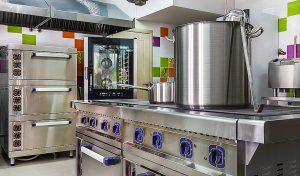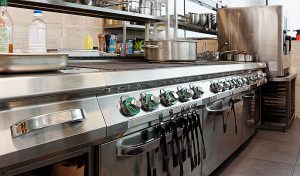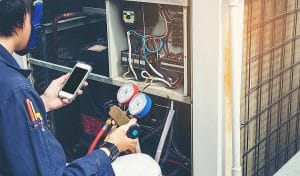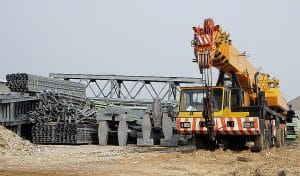
Crane rigging services, a fundamental component of urban construction, is witnessing significant advancements in technology, contributing to safer and more efficient operations in densely populated areas. These innovations are pivotal in addressing the unique challenges presented by urban environments, where space is limited, and safety is paramount.
Remote Operation and Automation
One noteworthy advancement is the integration of remote operation and automation into crane systems. Operators can now control cranes from a safe distance, reducing the risks associated with close proximity to heavy loads. This technology enhances precision, allowing operators to navigate cranes with utmost accuracy, a critical requirement in confined urban spaces.
Load Monitoring Systems
Sophisticated load monitoring systems provide real-time data on load weight and balance. This information is instrumental in preventing overloading, a common cause of accidents. Operators can monitor load conditions with precision, ensuring safe lifting operations, even in complex urban settings.
Telematics and Data Analytics
Telematics and data analytics have transformed crane maintenance and performance monitoring. These systems collect data on crane usage, maintenance needs, and operational efficiency. By analyzing this data, operators and maintenance teams can proactively address issues, reducing downtime and enhancing safety.
Improved Materials and Design
Modern cranes benefit from advanced materials and innovative structural designs. Lightweight yet durable materials contribute to overall efficiency and safety in crane rigging. These developments have enabled the construction of taller and more complex structures in urban areas.
Environmental Considerations
The construction industry is increasingly adopting eco-friendly practices in crane technology. This includes the use of cleaner fuels, energy-efficient components, and emission-reducing technologies. Such initiatives align with the broader goal of minimizing the environmental impact of construction projects in urban environments.
Digital Twins and Simulation
Digital twin technology enables the creation of virtual replicas of crane systems and construction sites. This allows for meticulous planning and simulation of lifting operations. Operators can identify potential challenges and hazards before they occur, further enhancing safety and efficiency.
The Role of Robotics
In some advanced cases, robotics are entering the realm of crane rigging. Robotic systems can perform tasks such as material handling and placement with precision and efficiency. While not yet widespread, this technology holds promise for future urban construction projects.
The Future of Crane Technology
As technology continues to evolve, the future of crane rigging in urban construction looks promising. Advancements in artificial intelligence, automation, and sustainability will likely play a significant role in shaping the industry. These innovations will further enhance safety, efficiency, and environmental responsibility in urban construction.
Collaboration and Training in the Digital Age
With the integration of advanced technology, collaboration and training have become paramount. Operators and rigging teams must continuously update their skills to harness the full potential of these innovations. Collaboration between crane manufacturers, operators, and construction firms is essential to ensure seamless integration and adherence to safety standards.
Challenges and Considerations in Urban Crane Rigging
While advancements in crane technology are revolutionizing urban construction, several challenges and considerations remain crucial for the safe and efficient execution of crane rigging in densely populated areas.
Traffic Management
Urban areas are characterized by heavy traffic, narrow streets, and limited parking space. Coordinating crane setup and operation while minimizing disruptions to traffic flow is a significant challenge. Effective traffic management plans and permits are essential to ensure the safety of pedestrians and motorists.
Noise and Environmental Impact
Construction activities, including crane rigging, can generate substantial noise and disrupt the urban environment. To address this, construction companies are increasingly adopting quieter equipment and scheduling lifting operations during less disruptive hours. Additionally, the use of electric or hybrid cranes helps reduce noise and emissions.
Safety Protocols and Training
Safety remains paramount in urban crane rigging DC. Comprehensive training for crane operators, rigging teams, and construction workers is essential to mitigate risks. Urban construction often involves working near occupied buildings, necessitating strict safety protocols to protect residents and workers.
Space Limitations
The confined spaces of urban environments require meticulous planning for crane setup and operation. Coordinating the placement of cranes, materials, and support equipment within limited areas demands precision and expertise. Collaboration with urban planners and local authorities is critical to ensure compliance with space regulations.
Regulatory Compliance
Navigating complex urban regulations and permitting processes can be challenging. Construction companies must have a thorough understanding of local laws and regulations governing crane rigging in urban areas. This includes adherence to noise restrictions, road closures, and safety protocols.
Community Engagement
Urban construction projects often have a direct impact on local communities. Engaging with residents and businesses in the vicinity of the construction site is essential to address concerns, provide information about project timelines, and minimize disruptions. Effective communication fosters positive relationships with the community.
Sustainability and Green Construction
The trend towards sustainable and environmentally responsible construction is influencing crane rigging practices. Companies are adopting eco-friendly technologies and practices to reduce the carbon footprint of construction projects. This includes the use of electric cranes, green building materials, and waste reduction measures.
Urban Planning and Integration
Successful urban crane rigging requires seamless integration with urban planning initiatives. Construction companies must align their activities with the broader goals of city development, including infrastructure improvements and sustainable urbanization. Collaboration between construction firms and city planners can lead to more efficient and harmonious urban construction.
Telematics and Remote Monitoring
One of the most notable innovations is the integration of telematics and remote monitoring systems into crane operations. Telematics allows for real-time tracking of crane performance, including load capacity, fuel consumption, and maintenance needs. This data is transmitted to operators and construction managers, enabling them to make informed decisions and ensure the crane’s optimal functioning. Remote monitoring also provides the ability to diagnose issues and perform maintenance tasks remotely, reducing downtime and enhancing overall project efficiency.
Electric and Hybrid Cranes
To address environmental concerns and noise pollution in urban areas, electric and hybrid cranes have become increasingly popular. These cranes operate quietly and produce minimal emissions, making them ideal for densely populated neighborhoods. Electric cranes are also highly energy-efficient, reducing fuel costs and carbon footprint. Their versatility and ability to operate indoors make them valuable assets in urban construction.
Conclusion
Crane rigging is undergoing a transformative evolution, driven by technological advancements that prioritize safety, efficiency, and environmental responsibility. As urban construction projects become increasingly complex, the role of crane rental services VA becomes even more critical. By embracing these technological innovations and adhering to stringent safety regulations, the construction industry can continue to thrive and build the cities of tomorrow with confidence and sustainability at the forefront.












